SLVA998A November 2018 – July 2021 TPS61322
2 Short Circuit Protection Implementation
 Figure 2-1 Typical Application
Figure 2-1 Typical ApplicationThe technique used in this application note to achieve the short circuit protection adds two general purpose active switches and some passive components as shown in Figure 2-1. The resistor Rsense together with the Rds,on of the Q2 monitors the output current of the sub-system. The Vo- voltage is fed to the base of the NPN signal switch Q1. The Q1 is general purpose bipolar switch, for example, MMBT3904. When the Vo- ramps to the Vbe threshold of the Q1, which is 0.6 V typically, the collector current of Q1 increases significantly and pull the Vgs voltage of Q2 lower than the gate threshold voltage Vth. In this way, the current path is cut off immediately and both the power system and the sub-system is protected.
The short circuit current threshold ILIMIT is set by the Equation 1:

where
- Rsense is the resistance of the sense resistor
- Rds,on is the on-resistance of Q2
- Vbe is the open threshold of the bipolar switch Q1
When the short circuit condition is removed, the Vo- voltage is pulled to GND slowly by the base-to-emitter current Ibe of the Q1. The recovery time is related to the output capacitor C3, and the leakage current set by Equation 2:
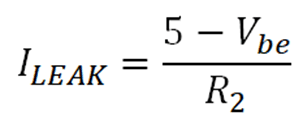
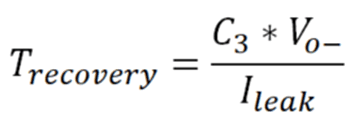
where
- Trecovery is the recovery time when an short-circuit accident is removed and the output voltage recovers to 5 V. (Vo- ramps down to 0 V).
- Ileak is the leakage current into the base of the Q1 switch, in other words Ibe.
- C3 is the output capacitance.
- Vo- is the voltage at the negative input side of the sub-system.
For example, the R2 is 1000 Ω, and the output capacitor is 4.7 µF. The Ileak is 4.4 mA, maximum. A simple 2.2-mA average leakage current can be used in the calculation. Then the recovery time is longer than 10 ms.
To accelerate the response time when SCP happens (or recovery time from SCP to normal mode), the resistor of R2 with smaller resistance can be used. The leakage current is inversely proportional to the R2 resistance according to the equation below. The recommended value for this resistor is between 100 Ω to 100 KΩ. It is a tradeoff between the recovery time/response time and the leakage current.
The following figures show the response time when a fast short-circuit accident happens. The Rsense is set to 0.5 Ω to get a 1.1-A target short-circuit current threshold. The actual trigger point is 1.1 A when the R2 is 100 Ω while the trigger point shifts to higher than 2 A when the R2 is higher than 10 kΩ.
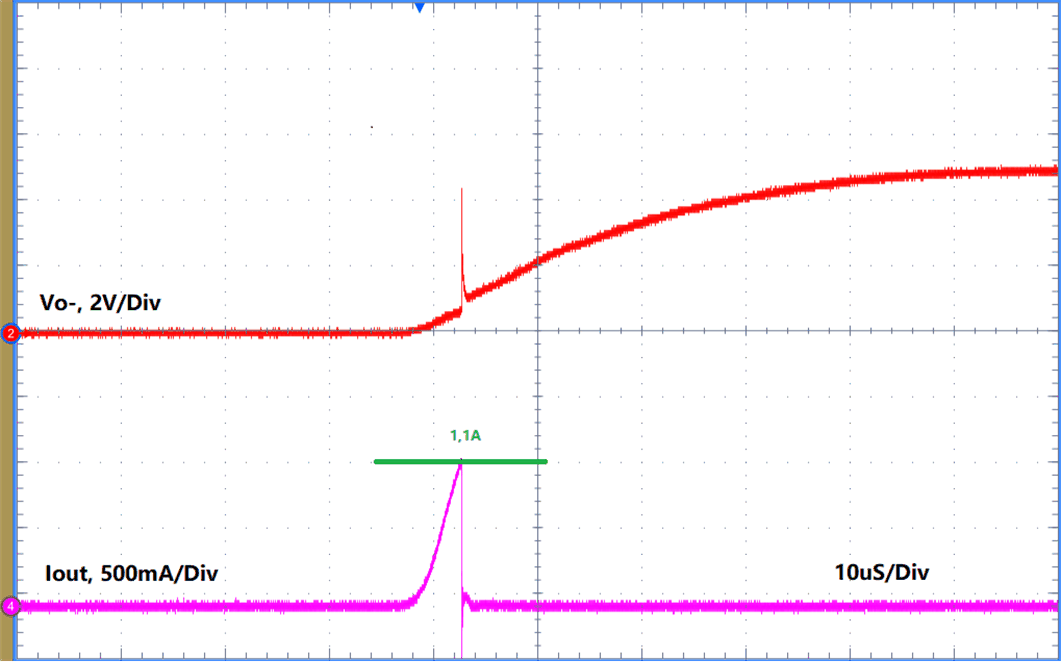 Figure 2-2 R2 = 100 Ω
Figure 2-2 R2 = 100 Ω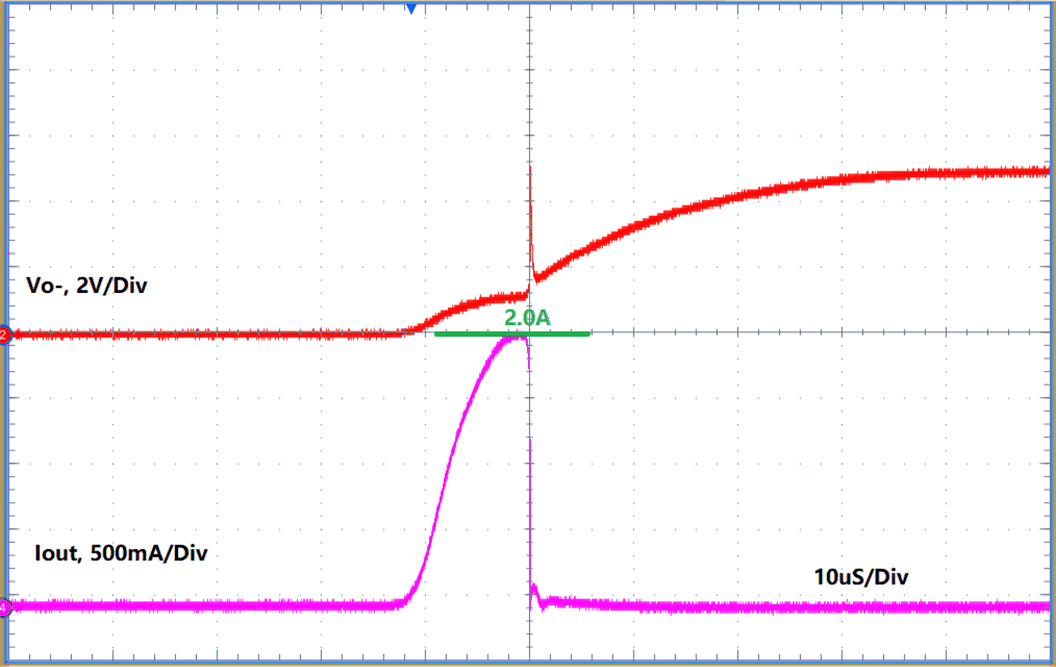 Figure 2-4 R2 = 10000 Ω
Figure 2-4 R2 = 10000 Ω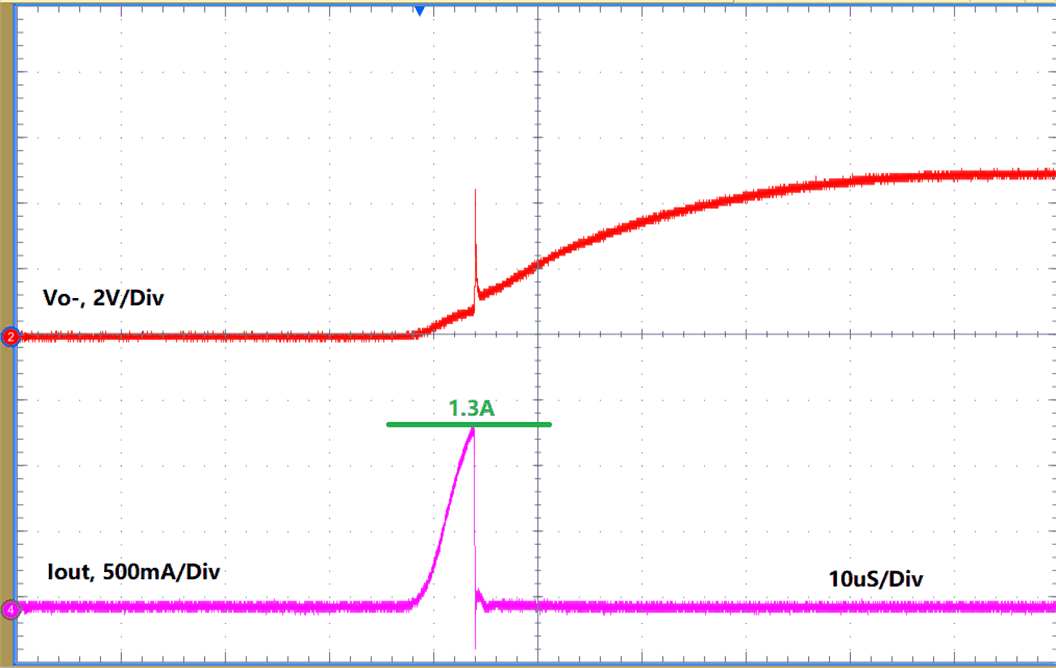 Figure 2-3 R2 = 1000 Ω
Figure 2-3 R2 = 1000 Ω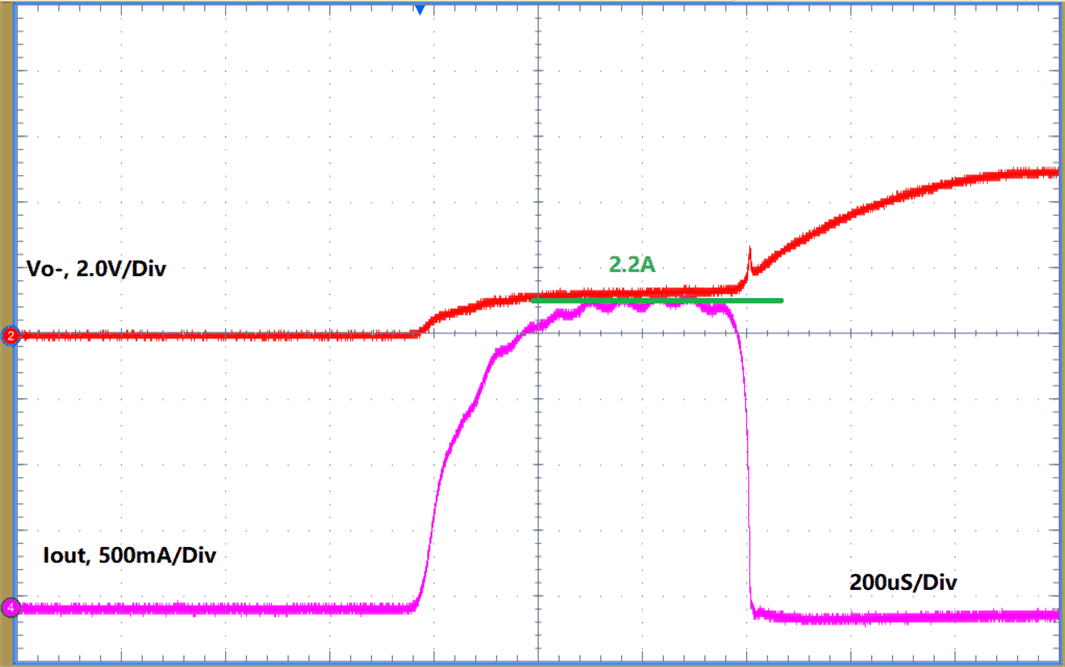 Figure 2-5 R2 = 100000 Ω
Figure 2-5 R2 = 100000 Ω